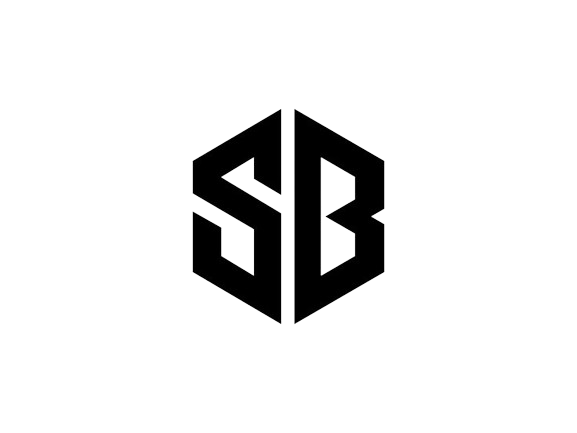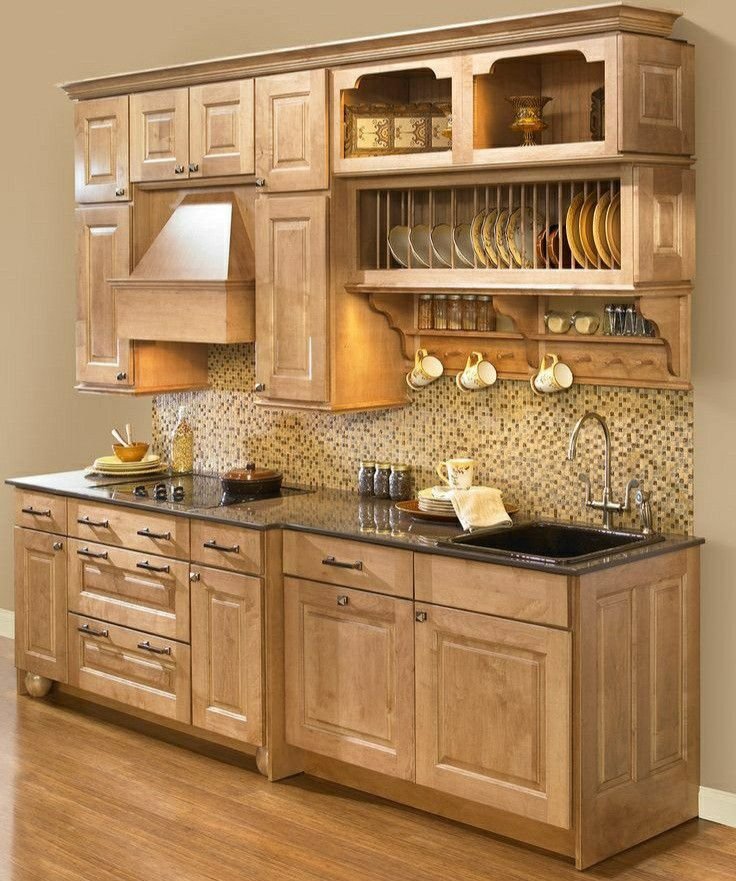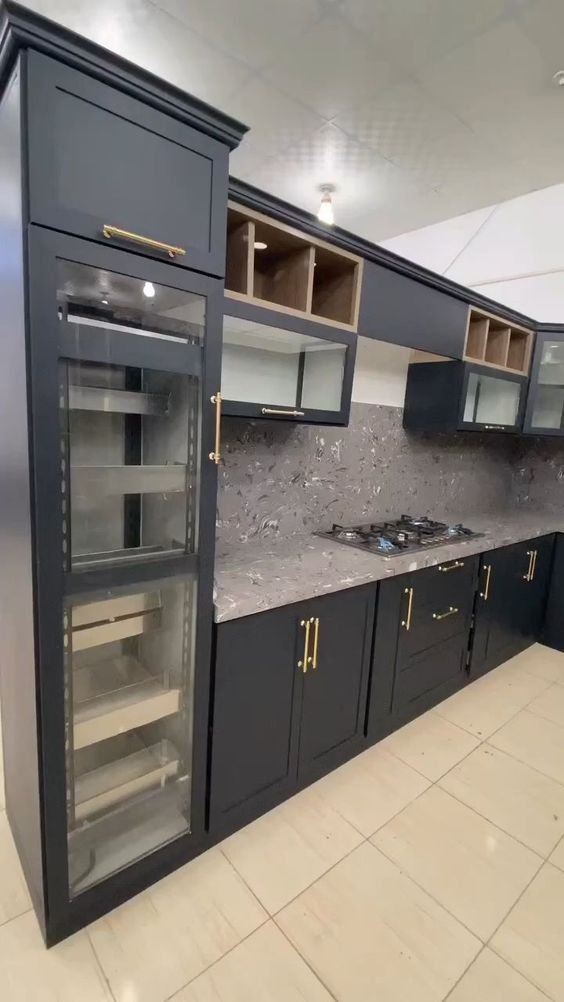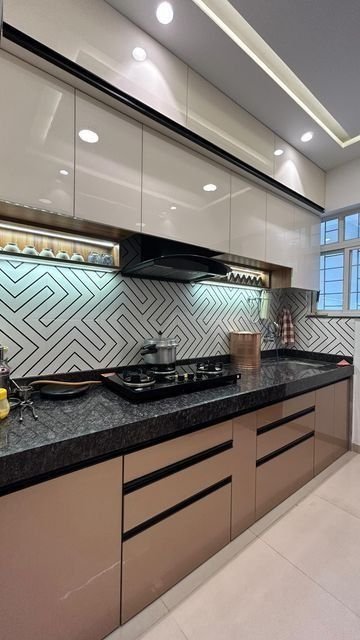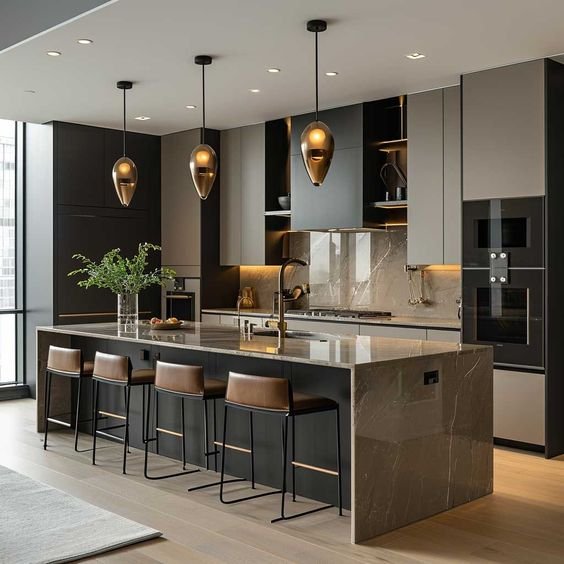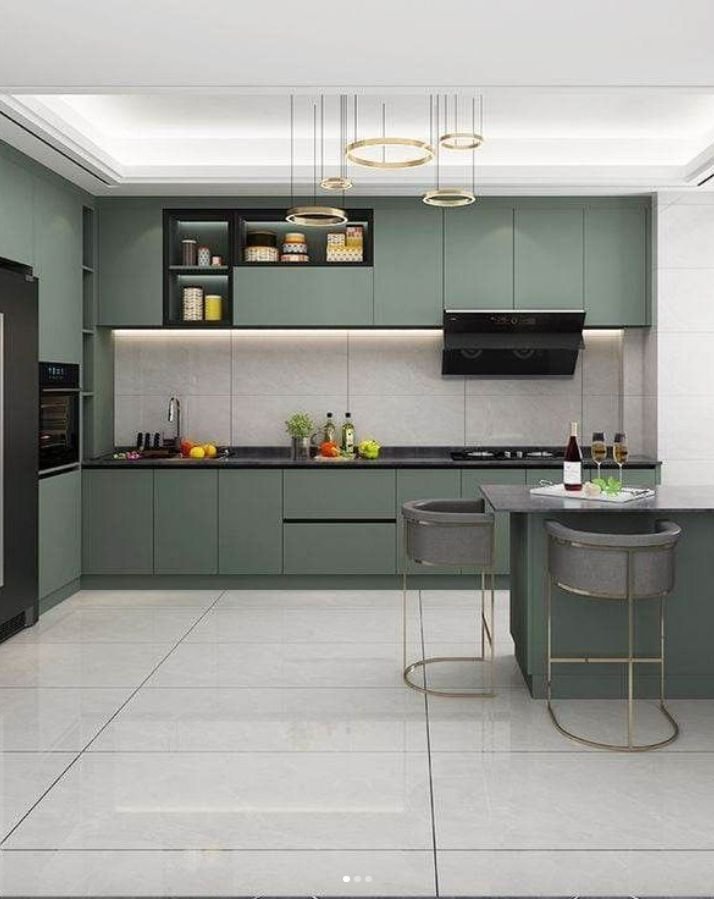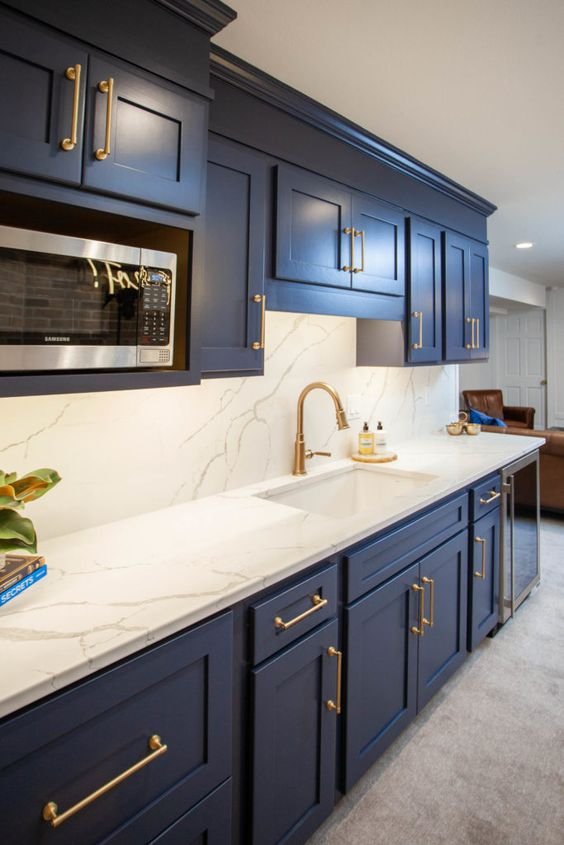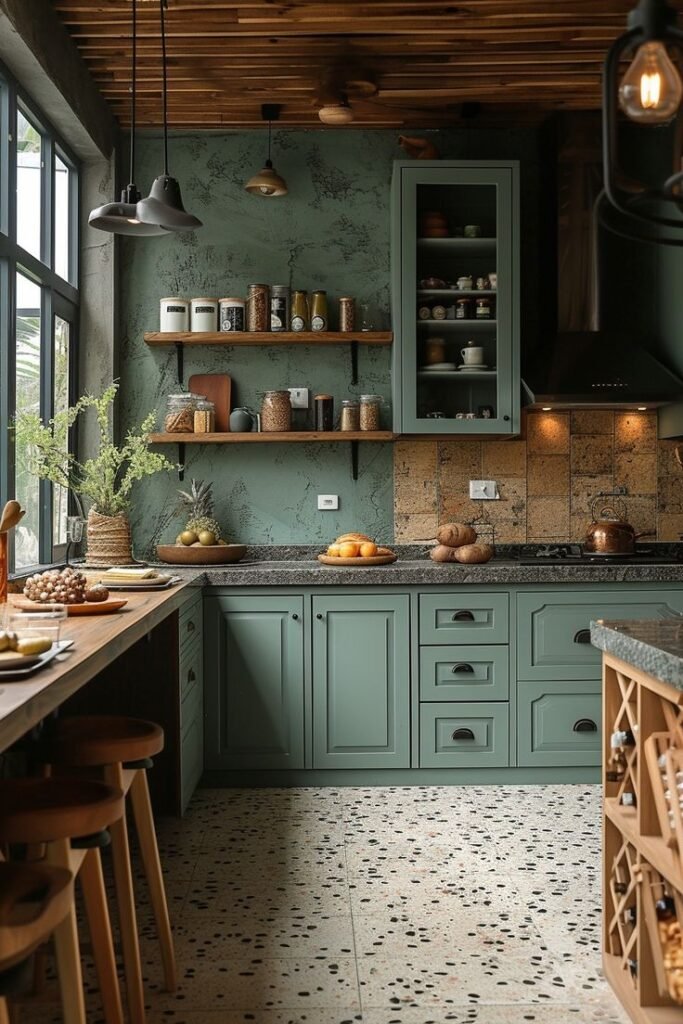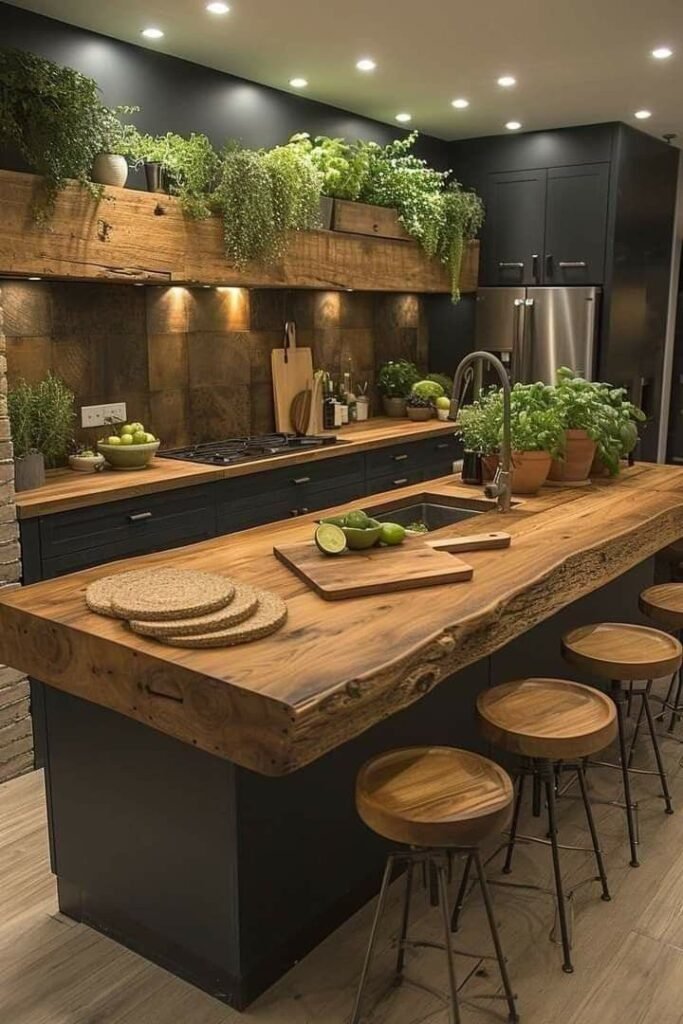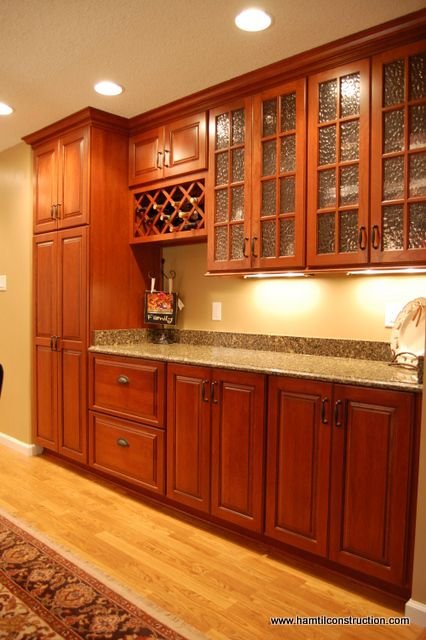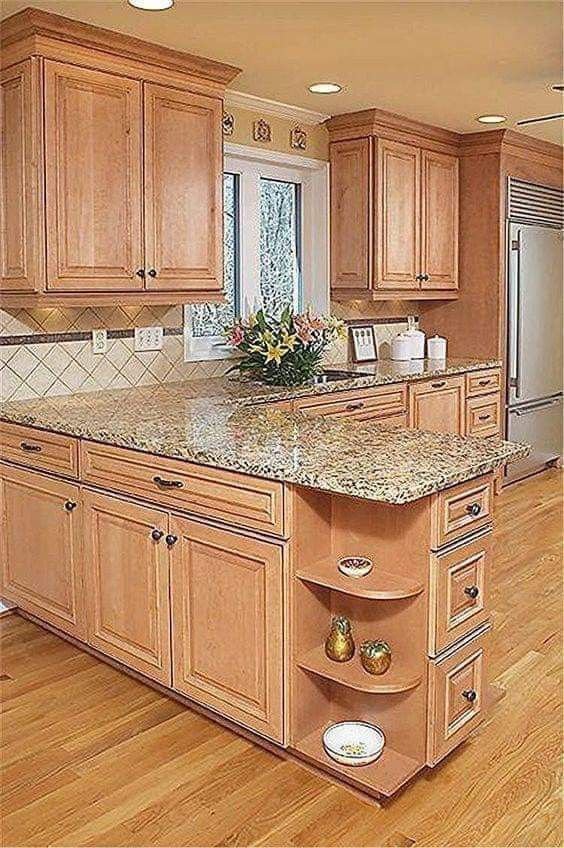Kitchen Cabinets
Kitchen cabinets design is a constantly evolving learning process as the way we use our kitchens is constantly changing. Kitchens, where once only one family member cooked, became family spaces, used not only for cooking, but also for entertaining, eating, working and even relaxing.
Therefore, it is very important to plan the kitchen from the very beginning; So we asked leading kitchen designers to help explain the process. Below, we’ll take you step-by-step through the design process so you can take all your creative kitchen ideas and combine them with practice to create a perfectly balanced room inspired by the world’s best kitchen designers.
Table of Contents
Basic Elements To Design A Kitchen
It is best if the kitchen is designed by experienced professionals, but only in collaboration with you. Because the way you use your kitchen will greatly influence your design choices.
Our step-by-step guide will help you learn how to design a kitchen like a pro, but you should always ask yourself if each step, from the finished room to the design, delivers the desired design and functionality. In terms of, that’s exactly what you want. . This way you can combine your shortlist with all the kitchen cabinets. photos and kitchen style ideas you’ve collected to create the perfect space.
- Create A Wishlist
“Start by mind mapping and writing down all the features of your dream kitchen,” says Andy Briggs, resident interior designer and creative lead at Optiplan Kitchens.
It’s time to think about what kind of fancy appliances you’ve always wanted? You in your current setup.
You can add more abstract ideas to this list that your designer can help you with: mixed-material kitchen cabinets. different countertop finishes, etc.
Expand your wish list by using websites and social platforms like Pinterest and Instagram for interior design inspiration. Magazines and brochures are also useful sources of the latest kitchen trends. “The more you look, the more you’ll understand which kitchen style you prefer, whether rustic classics or modern minimalism,” continues Andy Briggs.
- Set A Budget
Kitchen costs should be clearly defined at the start of your project.
“How far you can go on your wish list will depend on your budget,” says Andy Briggs. “You have to decide how much you can realistically spend on the project. In addition to the kitchen, be sure to include plumbing, wiring, lighting, appliances, flooring, trim, crafts, and any finishing touches. You should also add another 10 percent for unexpected expenses.
- Consider A Space
Kitchen design is not just about designing a kitchen suitable for the space; how you will use the room should also be taken into consideration when planning the kitchen.
“Think carefully about how you want to use the space and your needs first,” advises Damian Wright, senior designer at Smallbone.
“Since today’s kitchen is the focal point of the home, we approach design by thinking in terms of moments where there is space to cook, eat, entertain, and sometimes sit and work.
“However, even in a large room, try to keep prep, cooking, and washing areas close together for maximum efficiency.”
- Measure Up
Since a kitchen must serve so many important functions, including family dining, relaxing, working and playing, good kitchen planning and ample storage space are more important than ever when planning a kitchen. It happens, but it’s also important to make sure you have what you want. . Included, can be kept indoors. . What you want depends on the accuracy of your measurements. This is something you should do before you hire a professional designer, but if they come to you, you can delegate this responsibility to them.
“When planning your kitchen, be careful not to get too ambitious with individual elements,” says Ben Burbidge, managing director of Burbidge Kitchen Makers.
“Make sure you measure your tile accurately to ensure the island fits comfortably in your space.” When placed in the middle, there should be enough room for you to move around and access the rest of the kitchen.
“The space below the surface of the kitchen island is also important because it provides ample storage space for items and kitchen utensils such as low-profile refrigerators and deep drawers.”
- Consider Perfect Layout
Apart from aesthetic choices, kitchen layout ideas are where you should start your practical kitchen design journey.
“Effectively planning an ergonomic kitchen layout and maximizing space can make time spent in the kitchen more enjoyable. In your arrangement, try to position the sink, refrigerator, stove and oven within easy reach, and then consider how much storage space you have. stay in this area.
“Cabinets and drawers near the oven are usually best for cooking oil, pots and pans,” says Ben Burbage of Burbage Kitchen Makers. say
When planning, consider natural and street lighting. It is better to have a seating area near the windows. For example, the central area for food preparation should not be the main street between the foyer and the garden, which runs through the kitchen cabinets.
- Right Cabinetry Choices
Finding kitchen cabinet ideas is a fun part of kitchen planning.
“The starting point is to think about how you want your kitchen to look, how it relates to the living and dining areas, especially if it’s part of an open-plan space, and how it fits into your room. the overall layout of the house,” says interior designer Tiffany of Studio Duggan.
“Collect photos of kitchens that inspire you and start developing your ideas, thinking about how they will fit into your space, the joinery in other areas of the house and the period of your property.”
If you like traditional kitchen ideas, pay attention to the details of the kitchen cabinets..
“Painted kitchens are especially great because of their timeless appeal, and it’s helpful to repaint them every now and then so that classic Shaker kitchen from 20 years ago looks repainted and looks great. Looks good.” Tiffany continues.
“If you have a modern kitchen with a flat front, think about whether you will like it in the future. Considering the investment level, cabinets are one of those things you probably won’t want to replace, but you can always repaint them.” Tiffany recommends replacing walls and replacing the backsplash in the future.
- Proportion And Scale
Kitchen design is a good balance between practicality and aesthetics. The effect of kitchen cabinets. size is an important factor to consider. In addition to the style of the cabinet, keep proportions in mind and try to create some balance by placing key elements, such as fireplaces around the stove, as a centerpiece. Details will be determined by the size and height of your room.
A ‘standard’ kitchen cabinet is usually 600mm wide (although there are many other options and of course bespoke design allows for anything); We usually start by planning the room in 600mm sections to get an idea of the size.
“It’s best to raise tall units up to the ceiling or lower them if they have gaps,” says Tiffany Duggan. “Less than a meter of open space in a high-ceilinged room looks unbalanced, and it is often better to fill the space with more cabinets that can store infrequently used items, such as vases and throws.
- Select Kitchen Colours
“When our studio first opened in 2011, the kitchen, whether classic or contemporary, had a neutral look,” says Tiffany Duggan. “Now we’re seeing more demand for kitchen color ideas that match current home trends, and colorful kitchens with style and personality, which is probably another reason why Shaker style is so popular.
“It’s easy to personalize: the interior of the glass cabinet can be painted in one color, the door frame in a different color, or the handles can be changed to suit your needs. For a personal touch, I also recommend adding an antique china cabinet or sideboard to the room to keep the cabinets from looking too “smooth”.
“Because the kitchen is the heart of a busy, lively home rather than a quiet space, bright, warm and inviting wall colors can be very appropriate,” says Helen Shaw, director of Benjamin Moore UK.
“Alternatively, a little color also adds depth and character to a neutral kitchen space. “Using paint to add colour to the front of a cabinet, bar stool or shelving unit is not only inexpensive, but it also adds a personal touch.”
Kitchens are full of color options, from appliances to floors to windows and cabinets. Start by deciding how long you want to commit to it. One of the easiest and least expensive options is to paint the wall, which can be easily updated when you get tired of it. World Best Networking Website.
